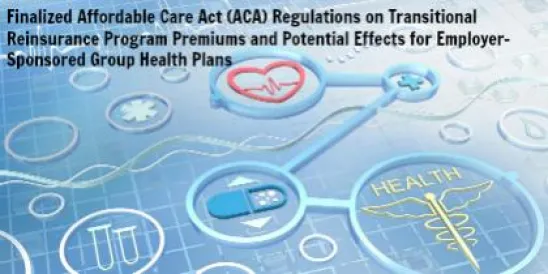Health care providers are facing the most dynamic and uncertain regulatory, legislative and fiscal environment in more than a generation. Increasingly, hospitals and health systems need to develop and maintain comprehensive government relations programs that address their site-specific or system-specific concerns. Federal government relations efforts are an integral component to health care providers’ business planning and strategic operations.
In order to thrive in today’s environment, providers must have tailored information, individualized political and policy analyses, and multi-faceted government relations programs that focus specifically on advancing their missions and promoting their operations.
To help guide you in evaluating your individual government relations efforts, we have developed the following recommendations for establishing an effective, comprehensive federal government relations program.
1. Undertake a strategic planning process. Taking the time to review the universe of policies and programs and assessing where those intersect with individual operations and service lines, finances, and goals allows providers to better prepare for the future, to take advantage of opportunities, and to blunt the potential adverse effects of threats or negative developments. Such a process need not be burdensome or lengthy, but should involve a comprehensive review of operations and an analysis of pending/anticipated policy changes along with an overlay of the current budgetary and political environments. The result should be a practical government relations work plan that includes specific goals, objectives, and tactics for the year ahead.
2. Secure organization-specific analyses of legislative and regulatory proposals and maintain a system to receive timely information specific to your organization. Providers often rely solely on the broad-based information reported in the media or what is provided to them from trade associations. Though this information is useful, it may not address specifically how proposals or changes will affect their particular organizations, finances, or patients. Individualized analyses and insight enable providers to respond appropriately to legislative and regulatory developments at the federal level.
3. Build and sustain relationships with local district and state officials as well as elected officials who represent the organization’s staff, leadership, and service areas.Extending outreach efforts beyond local and state officials to the largest cohort of elected officials relevant to your operations expands the group of policymakers willing to take action on your behalf. Such efforts should involve the following:
-
visiting Capitol Hill a few times a year in addition to trade association lobby days;
-
engaging policymakers at home through individual meetings at their offices;
-
attending town hall meetings and other community events;
-
hosting health fairs and other health education events; and
-
inviting Members of Congress and their staffers to tour your operations and facilities (while always being mindful of compliance with ethics and gift rules).
4. Establish relationships with other health policy thought leaders in Congress, principally those who serve on the committees with jurisdiction over health care: the Senate Finance Committee; the Senate Health, Education, Labor, and Pensions Committee; the House Energy and Commerce Committee; and the House Ways and Means Committee. Increasingly, health policy and payment decisions are made by those who serve on these powerful committees, often with little input from non-committee colleagues. Providers who do not have many — if any — contacts with elected officials on these committees can be at a disadvantage unless they reach out to these offices to tell their “story” and to establish relationships. These policymakers and their staffs are interested in learning about health care delivery challenges and innovations and about how their proposals would affect various communities and constituencies. Offering to be a trusted resource will assist them and will also elevate your profile positively within Congress.
5. Reach out to and establish partnerships with federal agency officials, including political and career staff at the Centers for Medicare and Medicaid Services (CMS). Providers often avoid reaching out to regulators, as they may be considered adversaries. In our experience, federal agency officials are eager to work side-by-side with providers to identify and address challenges, to explore creative remedies, and to implement new efforts to achieve the triple aim of improving health outcomes, increasing health system efficiencies, and reducing costs. Taking the time to travel to Washington, D.C., and to Baltimore, where CMS is located, and to engage with agency staff can result in significant positive partnerships with agency officials and, in turn, can benefit your organization.
6. Develop and disseminate concise materials that educate federal policymakers about your organization/institution and that illustrate your impact in the communities you serve. Developing institution-specific, tailored documents designed for a public policy audience, such as maps that show your institution’s operations and reach (e.g., service area, number of employees, number of patients served) overlain on Congressional district maps, helps personalize your impact for elected officials. Members of Congress and staff have expressed “fatigue” at hearing the “no more cuts” message from providers; as such, presenting information and documentation illustrating how your organization contributes to the local economy and what you are doing proactively to reduce costs and improve care will resonate with policymakers in a meaningful way.
7. Deploy an interdisciplinary team of representatives from your organization to engage with federal policymakers. The provision of health care involves a team of physicians, nurses, physician assistants, social workers, care coordinators, and other providers. Policymakers appreciate meeting with all types and levels of providers so that they can gain a 360-degree understanding of health care in their districts and states. In addition to having in-house and/or external government relations consulting staff, we recommend training at least three clinical staff members to be spokespeople and advocates in the federal policymaking arena. These individuals, along with CEOs, CFOs, and COOs, can be highly effective advocates and can bring to life the work that your organization does for the community and can give policymakers first-hand insight into how their decisions impact the delivery of care.
8. Host a Congressional briefing to educate Congress about a particular issue or program. Congressional briefings are a terrific way to reach a broader audience within the Congress. If your organization is leading the way in care coordination, reducing readmissions, or some other cutting-edge health care issue, take the time to organize a briefing on Capitol Hill to educate your Congressional delegation, other Members of Congress, agency officials, and others in the health care community about your work.
9. Submit written comments to and weigh in with CMS on proposed rules and regulations. In addition to relying on trade associations to submit comments to CMS, it is increasingly important for individual hospitals and health systems also to take the time to tell the agency how its proposals will impact individual organizations, not just the industry at-large. Also, a policy change may affect your organization in such a way that you would want to highlight or emphasize your particular concerns, or take a slightly different position than that of your trade association. Taking the time to develop and submit written comments or seeking a meeting about your specific issues can help ensure that the agency understands your unique situation. When the agency issues its final rule, it must respond to all of the comments it receives, so your individual efforts could result in a specific change in your favor. Further, sharing your comment letters with your elected officials on Capitol Hill helps to educate them about the issues and can engage them to take action on your behalf.
10. Strategically utilize social media to connect with elected officials—increasingly, Members of Congress rely on social media, such as Twitter, to hear from and respond to constituents. We work with health care providers to create social media plans and best practices so they can utilize this mode of communication with federal policymakers in a way that is appropriate and effective. Social media activity also helps generate additional positive media attention and public support.





 />i
/>i
